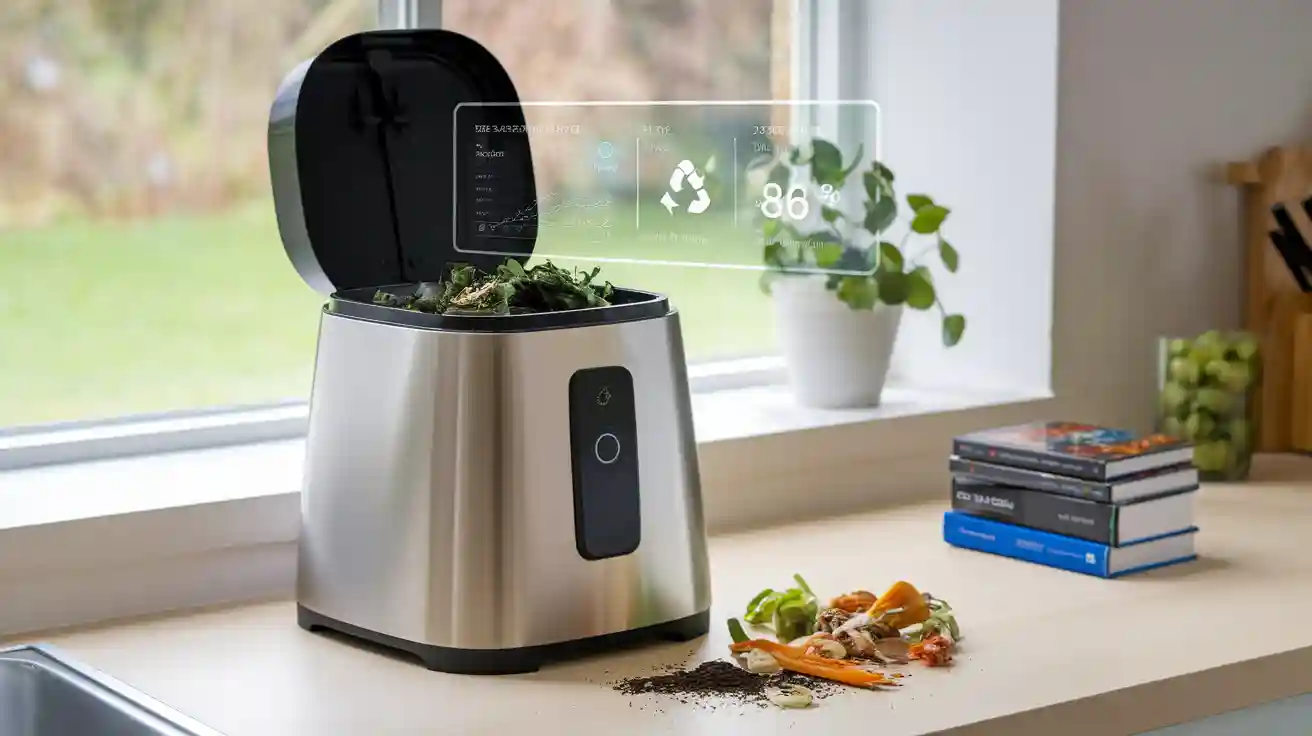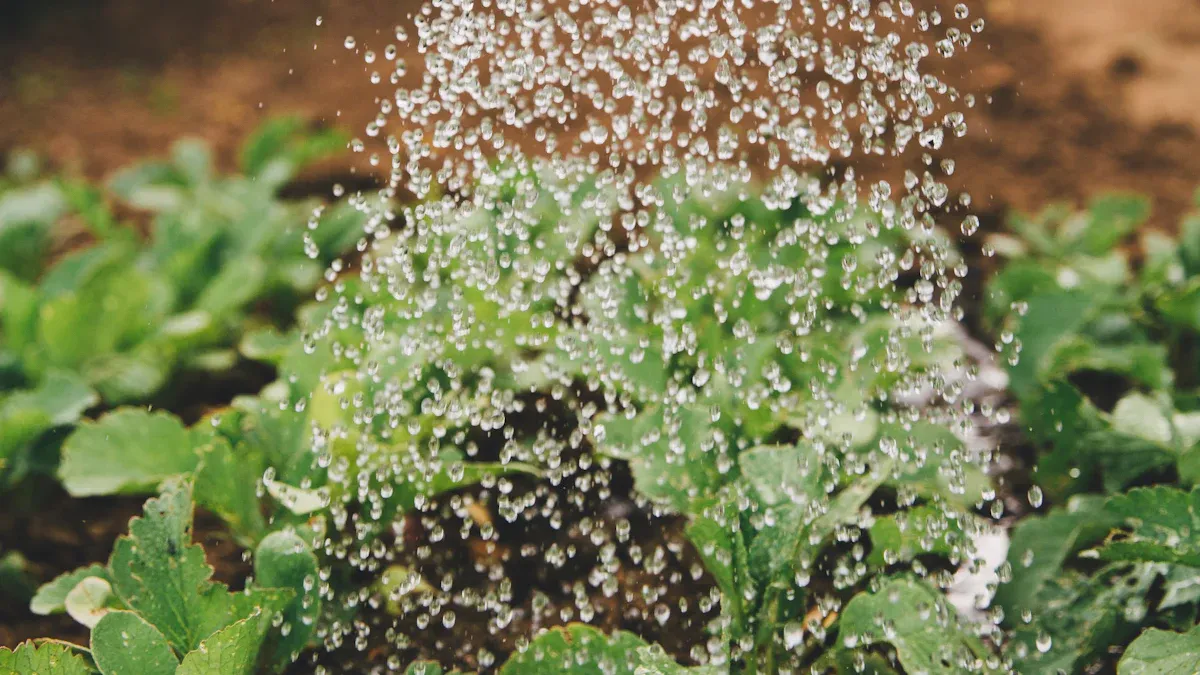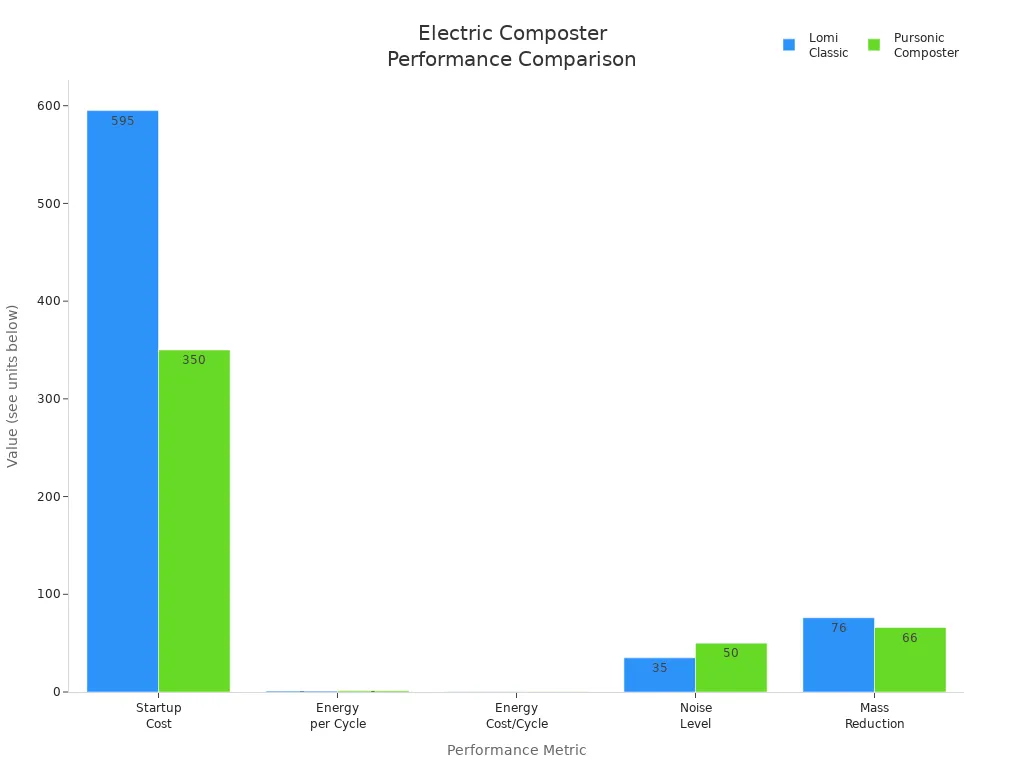
The electric composter icarus once lived only in science fiction. Today, real-world machines transform food waste with impressive speed and efficiency.
Government support and community education boost adoption worldwide, making these devices common in homes and businesses.
| Metric/Aspect | Data/Value |
|---|---|
| Market Revenue 2024 | USD 1.2 billion |
| Projected Market Revenue 2033 | USD 3.5 billion |
| CAGR (2026-2033) | 12.5% |
| Residential Segment Market Share 2023 | 50% |
The electric composter icarus finds itself outpaced by real-world progress.
The Electric Composter Icarus: Science Fiction’s Vision
Imagining the Icarus in Sci-Fi
Writers often use the electric composter icarus to show how technology might solve food waste in the future. In many stories, the device sits in the corner of a spaceship or a futuristic kitchen. It hums quietly while turning scraps into clean soil in minutes. Characters trust the electric composter icarus to handle any type of waste, from vegetable peels to leftover meals. Some stories even show the machine working with robots or smart home systems. The device seems simple, but it represents hope for a cleaner world.
In science fiction, the electric composter icarus often appears as a symbol of progress and sustainability.
Fictional Capabilities and Limitations
The electric composter icarus in these stories can break down waste almost instantly. It never smells bad or needs much cleaning. Many versions run on renewable energy and never break down. However, these stories also show some limits. The device sometimes struggles with large amounts of waste or unusual materials. Writers may describe it as needing rare parts or special care. The electric composter icarus often works best in perfect conditions, which do not always match real life. Readers see a device that promises much but faces challenges when used outside of fiction.
Real-World Electric Composters Surpassing Fiction
Leading Models and Technologies
Today’s electric composters show how far technology has come. Many models now offer features that once seemed possible only in science fiction. These machines use advanced systems to turn food waste into compost quickly and cleanly. Some models even fit on a kitchen counter, making them easy to use in homes and apartments.
Here is a table showing some of the top electric composters and their key strengths:
| Model | Key Strength/Category | Notable Features/Details |
|---|---|---|
| Vego Kitchen Composter | Best Overall | Multi-mode options, sleek design, ease of use, smart features, reduces kitchen waste by 85-95% without odors. |
| Vitamix FoodCycler FC-50 | Best Value | Affordable, effective composting, good grinder, multiple capacity options (3L and 5L). |
| Lomi 1 Electric Composter | Most Aesthetic | Stylish design, multiple modes, larger capacity, advanced grinder in newer versions. |
| Reencle Home Composter | Best for Microorganisms | Focus on microorganism-based composting. |
| Luma Electric Kitchen Composter | Best for Green Bins | Designed to complement green bin composting. |
| Geme Electric Composter | Best Large Capacity | Large 19L capacity, floor model, processes 90% biowaste including small bones and pet waste, odor control without carbon filter. |
| Airthereal Revive Electric Kitchen Composter | Best for Quick Composting | Fastest cycle (2-7 hours), small countertop size, activated carbon filters for odor control. |
Modern electric composters use several new technologies. Aerobic digestion speeds up the composting process by using oxygen-loving bacteria. Smart monitoring systems track temperature and moisture, making sure the compost stays healthy. Advanced aeration and filtration systems help control odors, so people can use these machines indoors without worry. Some models even connect to the internet, letting users check on their compost from a phone or computer. These features make real-world composters more practical and efficient than ever before.
Comparing Electric Composter Icarus to Today’s Innovations
The electric composter Icarus in science fiction could break down waste quickly and without mess. However, today’s real-world composters match or even surpass these imagined abilities. For example, the Airthereal Revive can finish a composting cycle in as little as two hours. The Lomi 1 and Vitamix FoodCycler both reduce food waste by about 90%, which rivals the efficiency seen in fictional devices.
Many modern composters use membrane-covered aerobic composting technology. This system lets water vapor escape but blocks bad smells and greenhouse gases. Intelligent monitoring systems use fans to keep the compost full of oxygen, which helps bacteria work faster. Reactor composting technology combines feeding, stirring, and exhaust control in one closed unit. This setup allows for rapid composting and easy gas treatment.
Note: These innovations make electric composters more reliable and user-friendly than the Icarus ever was in fiction.
A quick comparison of two leading models shows how far technology has advanced:
| Feature | FoodCycler Eco 5 / Eco 3 | Lomi by Pela (including Lomi 3) |
|---|---|---|
| Capacity | 5 L (Eco 5), 3 L (Eco 3) | 3 L |
| Energy Consumption | 0.8 kWh per cycle | 0.6 kWh per cycle |
| Modes of Operation | 1 mode | 3 modes (Eco-Express, Lomi Approved, Grow) |
| Carbon Filter Replacement | $24.95 every 3-4 months, plastic container | $50-55 every 90 cycles, compostable filters |
| Design Features | Removable waste bucket lid for storage | Smaller height for easier countertop placement |
| Price Range | Under $400 | Under $500 |
| Waste Reduction | About 90% | About 90% |
These real-world machines show true innovation. They use technology to solve problems that science fiction once only imagined. People now enjoy faster, cleaner, and more sustainable composting at home or work.
Key Innovations Outperforming Sci-Fi

Speed and Efficiency in Modern Composters
Modern electric composters work faster than many science fiction devices. They use sensors and monitoring systems to keep the right temperature, moisture, and oxygen levels. This helps the compost break down quickly and reduces greenhouse gas emissions. Some machines finish a cycle in just a few hours. These composters also use automation and robotics to sort and process waste, which increases efficiency and keeps the process clean. Unlike the fictional Mr. Fusion, real composters focus on improving natural processes with advanced technology.
- Sensors optimize composting conditions for speed and quality.
- Automation reduces manual work and speeds up waste breakdown.
- Machines minimize odor and pests, making them ideal for indoor use.
- The compost produced is rich and supports green gardening.
Automation and Smart Features
Today’s electric composters include smart features that science fiction did not predict. Many models have internal grinders and compressors that break down food waste quickly. Sensors track temperature, humidity, and oxygen to create the best environment for composting. Some devices, like The Lomi, offer special modes for fast composting or even for breaking down certain plastics. Carbon filters help control odors, so people can use these machines in green urban homes.
A table below shows how smart sensors and IoT integration improve performance:
| Aspect | Details |
|---|---|
| Sensor Types | Temperature, moisture, gas, pH, and light sensors for complete monitoring |
| Connectivity Options | Wi-Fi, Bluetooth, Cellular, LoRaWAN for remote access and alerts |
| Application Sectors | Residential, commercial, industrial, agricultural |
| Benefits | Real-time monitoring, remote control, better compost quality, less manual work |
Environmental Impact and Sustainability
Electric composters help cities and homes stay green by reducing food waste sent to landfills. They use aerobic composting, which does not produce methane, a harmful greenhouse gas. These machines fit well in small green spaces and apartments. They support the green circular economy by turning waste into compost for gardens. Composting also brings people together through community gardens and green workshops. Some models even recover energy, making the process more sustainable. People should remember that manufacturing and electricity use add to the carbon footprint, but the green benefits often outweigh these costs.
User Experiences and Practical Results
Real-World Testimonials
Many users find electric composters easy to use and helpful for reducing kitchen waste. They often mention the convenience of pressing a button or using sensors to start the process. People living in apartments or places without outdoor space appreciate these devices. Some users feel surprised by how quickly the machine produces compost-like material, though they notice the output is not true compost. A few users report that the material continues to mature after removal, which can be useful for green gardening.
However, users also point out some limits. The machines cannot handle large bones or tough materials. Sometimes, odors occur, and users need to add sawdust or charcoal to control smells. Cost and electricity use raise concerns, especially if the energy does not come from green sources. One reviewer recommends the Reencle Prime for its reliability but reminds buyers that no machine offers a magic solution. Many users see electric composters as a practical tool for a green lifestyle, but not a perfect answer for everyone.
Note: Users often adjust their expectations after comparing real-world results to the almost magical composting seen in science fiction.
- The output is not true compost but ground, dehydrated food scraps.
- Some pets prefer the output over regular soil, showing a difference in quality.
- Experts warn that the material can become moldy and harm plants if used directly.
- Mixing small amounts with soil can help plants grow, but users must be careful.
- Cost and accessibility affect satisfaction, with some users benefiting from green subsidies.
Performance Data and Outcomes
| Performance Metric | Lomi Classic (Machine A) | Pursonic Food Waste Composter (Machine B) |
|---|---|---|
| Capacity | 3 liters | 3 liters |
| Space Required | ~1.5 square feet | ~1.25 square feet |
| Time for Food Breakdown | 4 to 16 hours | 6 to 7 hours |
| Startup Cost | $595 | $350 |
| Energy Consumption per Cycle | 0.962 kWh (average) | 1.187 kWh (average) |
| Energy Cost per Cycle | $0.20 | $0.27 |
| Noise Level at 2 feet | ~35 dB | ~50 dB |
| Odor | No noticeable smell | Strong odor during operation |
| Mass Reduction of Food Waste | 54% to 76% | Approximately 66% |
| Durability | No issues observed | Failed after 5 cycles |

The Lomi Classic shows strong durability and low odor, making it suitable for indoor green spaces. The Pursonic model failed quickly and produced strong smells, which limits its use. Both machines reduce food waste volume, but the output is not biologically stable compost. Experts advise caution when using the material for green gardening, as it may harm plants if not mixed with soil.
Electric composters now outperform science fiction devices like the Icarus.
- They automate decomposition and use smart sensors for real-time control.
- Rapid composting turns waste into usable material in less than a day.
- Odor control and compact designs fit urban homes.
- Energy-efficient models lower environmental impact.
A scientific study shows these machines cut landfill waste, reduce emissions, and create valuable compost. Electric composters help people manage food waste faster, smarter, and more sustainably than ever before.
FAQ
How does an electric composter work?
An electric composter uses heat, grinding, and airflow. It breaks down food scraps into a dry, soil-like material. Sensors help control temperature and moisture.
Can electric composters handle all types of food waste?
Most electric composters process fruit, vegetables, grains, and small bones. Large bones, shells, and oily foods may cause problems or slow the process.
Is the output from an electric composter real compost?
The output is not true compost. It is a pre-compost material. Mixing it with soil helps plants grow and finishes the composting process.


